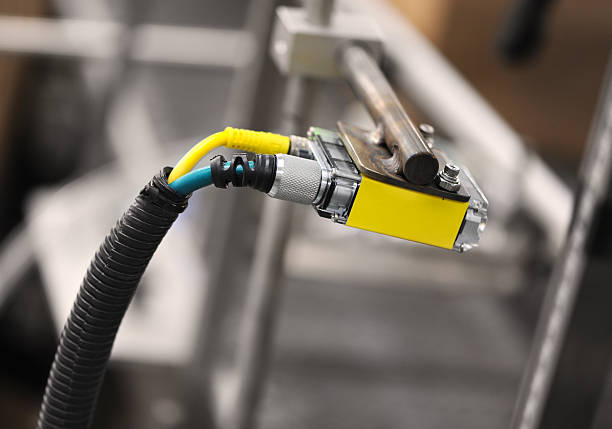Today’s factories and warehouses rely on accurate object detection to keep machines running smoothly, protect workers, and track inventory. Of all the sensors on the market, photoelectric sensors are often favored because they see far, handle dirt or moisture with ease, and produce a solid signal where metal or magnets won’t work. That’s why you’ll find them everywhere from packaging lines and car assembly plants to material-handling aisles and food-processing tunnels.
This post breaks down how these sensors actually operate, shows real-world uses across sectors, highlights why they beat older technologies, and offers tips on adding them to a business-to-business automation setup.
Companies hunting for dependable proximity and photoelectric sensors for rugged use can check https://www.omchele.com/ru/proximity-sensors/ of automation-ready products.
What Are Photoelectric Sensors?
In simple terms, a photoelectric sensor is a no-touch eye for machines. It sends out a beam of infrared or visible light, then waits for that beam to bounce back or get blocked. If the light path changes, the sensor knows something showed up-or left-and triggers the proper action.
Most photoelectric sensors share three main parts:
- A light emitter, which can be an LED or laser.
- A receiver, often a photodiode or phototransistor.
- A control circuit that processes the received signal.
Depending on how they use light, photoelectric sensors split into three basic styles:
- Through-beam sensors place the emitter and receiver facing each other; something passing between them breaks the light beam and triggers detection.
- Retro-reflective models mount both units in the same housing, sending the beam toward a mirror that bounces it back; when an object blocks the return path, the sensor activates.
- Diffuse type sensors also keep emitter and receiver together, relying on stray reflected light off the target to make the reading.
Thanks to these design options, photoelectric sensors are among the most flexible and widely used detectors in factories and warehouses.
Key Advantages of Photoelectric Sensors for Industrial Use
Manufacturers and logistics firms depend on automation parts that work accurately, last long, and adapt quickly to change. Photoelectric sensors beat older contact or inductive models when handling different materials, uneven surfaces, or larger detection distances.
Long Sensing Distance
Depending on the model, photoelectric sensors can spot an object from just a few millimeters to several meters away. This long reach makes them great for conveyor systems, packaging lines, and general material handling projects.
Non-Contact Detection
Because these devices use light instead of touch, they never physically contact the target. That quality cuts down on wear, needs almost no maintenance, and lets the sensor work safely with fragile or tiny items.
Versatile Object Detection
Where inductive sensors spot only metal, photoelectric eyes see plastic, glass, wood, and other materials—no matter their color or surface print.
Fast Response Time
With a response time in the microsecond range, photoelectric sensors keep up with speedy production lines that rely on quick and exact detection.
Compact Size
Tiny models fit easily into tight spots, whether on a robotic arm, inside an automated inspection unit, or beside a smart packaging machine.
Common Industrial Applications of Photoelectric Sensors
From simple counting to precise tracking, photoelectric sensors show up in just about every industry. Here are some tasks they handle every day:
Packaging and Labeling
On a moving conveyor belt, photoelectric sensors check for the presence and line-up of boxes, bottles, or labels. By doing so, they keep each item processed correctly and stop mislabeling or packaging errors before they start.
Automated Warehousing
Inside busy logistics hubs and e-commerce warehouses, tiny sensors spot where each item sits, notice any missing crate, and check that every moving bin is right where it should be.
Food and Beverage Processing
Because cleanliness matters, food plants rely on touch-free photo sensors. These eyes count warm pastries, spot clear bottles, and keep filling heads aimed all day.
Automotive Manufacturing
On the fast-moving car line, sensors watch every bracket, module, and engine part slide into place. Their sharp reading and toughness against sparks and grime save time and cut rework.
Printing and Paper Industries
In presses and bindery cells, sensors track sheet edges, read color marks, and steer paper so cuts and folds land exactly on target.
Choosing the Right Photoelectric Sensor
Finding the best photo sensor for a job involves answering a few practical questions. Staff buying on behalf of factories or B2B clients should ask:
Sensing Range and Type
How far away does the sensor need to look, and should it shoot straight across (through-beam), bounce off a mirror (retro-reflective), or glance off the same board (diffuse)? For dusty or wet zones, through-beam still gives clean, reliable hits.
Object Characteristics
Is the target bottle clear, shiny metal, or heavy cardboard? Some models add background shielding or polarized light to keep big flaws from triggering the read.
Environmental Conditions
Check the sensor’s IP code-first against rain, dust, or jolts. Then look at the heat windows or motor frames can reach and the body material that will contain the electronics.
Mounting and Connectivity
Always double-check the sensor’s physical size, cable length, and whether it uses a PNP or NPN output. Making sure it works with your current PLCs or control system is equally important.
Brand Reliability and Support
Choose suppliers with a proven track record who provide clear manuals, options for custom features, and ongoing help after the sale. Omchele, for example, offers a broad range of proximity and photoelectric sensors that fit neatly into most factory setups.
Future Trends in Photoelectric Sensor Technology
As factories get smarter under the Industry 4.0 banner, photoelectric sensors are keeping pace with faster, easier ways to connect and work.
Smart Sensor Capabilities
Many new models include built-in diagnostics, send predictive maintenance alerts, and talk directly over networks such as IO-Link or EtherCAT. This feature cuts unplanned downtime and makes asset management a lot simpler.
Miniaturization and Integration
Today’s sensors are tiny yet stronger than before. Engineers can embed them right into robotic arms or tight machine cavities without losing detection range.
Energy Efficiency
Low-power designs trim energy costs when thousands of sensors are running around the clock, helping factories meet their green goals.
Improved Background Suppression
Better optics and smart filtering now give diffuse sensors steady, accurate reads even when shiny, clear, or dark surfaces are nearby.
To wrap things up, photoelectric sensors have become a must-have in almost every B2B automation setup today. They work quickly, read tiny movements with great accuracy, and can spot almost any material or shape, which is why you see them everywhere. As factories, warehouses, and assembly lines link up and run more on their own, these sensors will stay at the heart of the growing smart automation scene.
When you add new gear or replace older parts, team up with trusted suppliers like Omchele so your photoelectric sensors deliver the quality and uptime you need.

















